
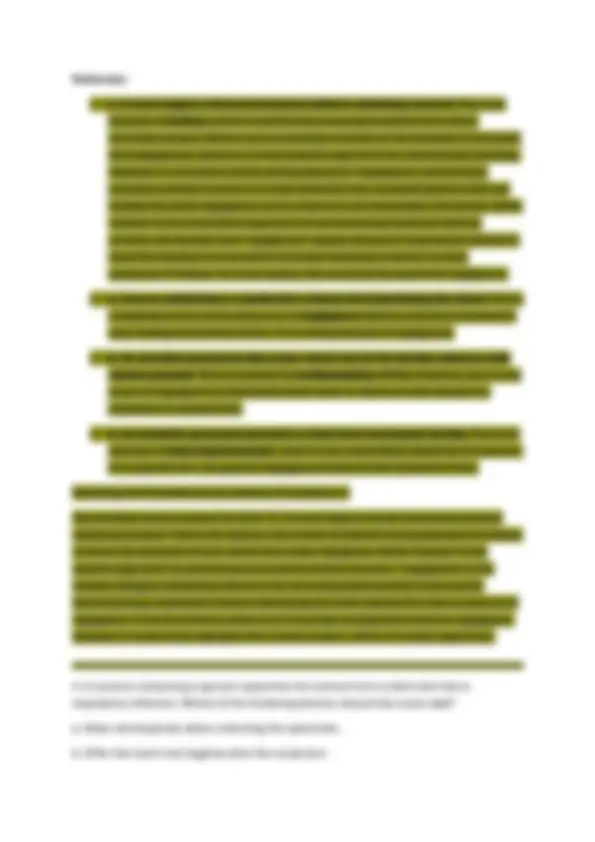
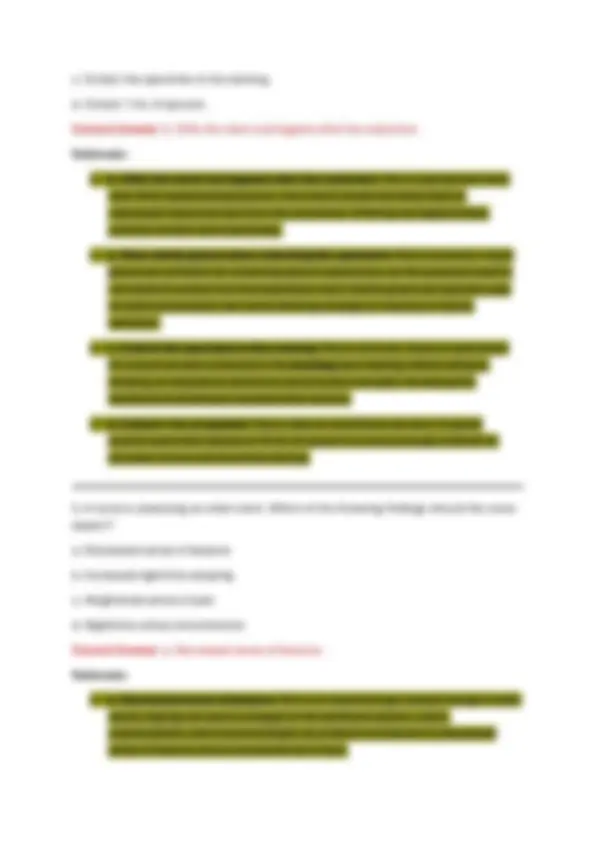
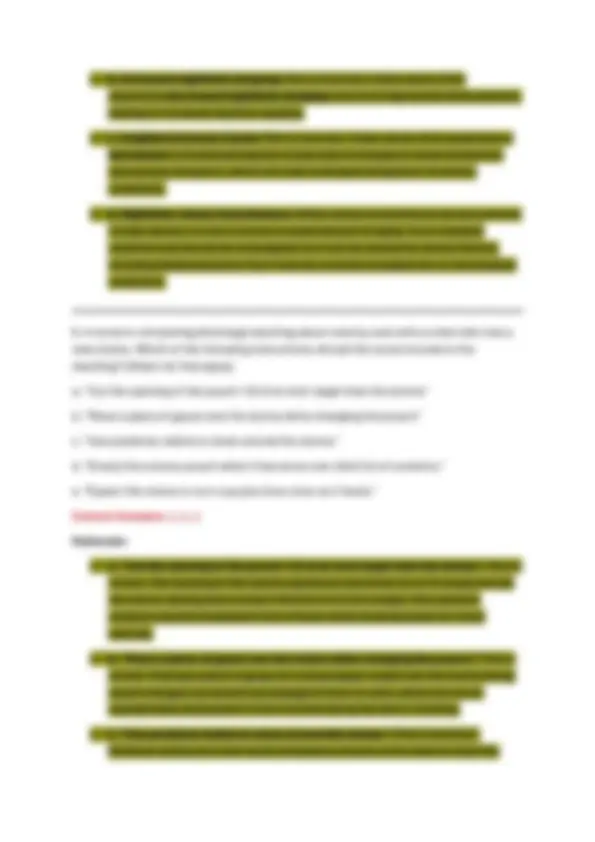
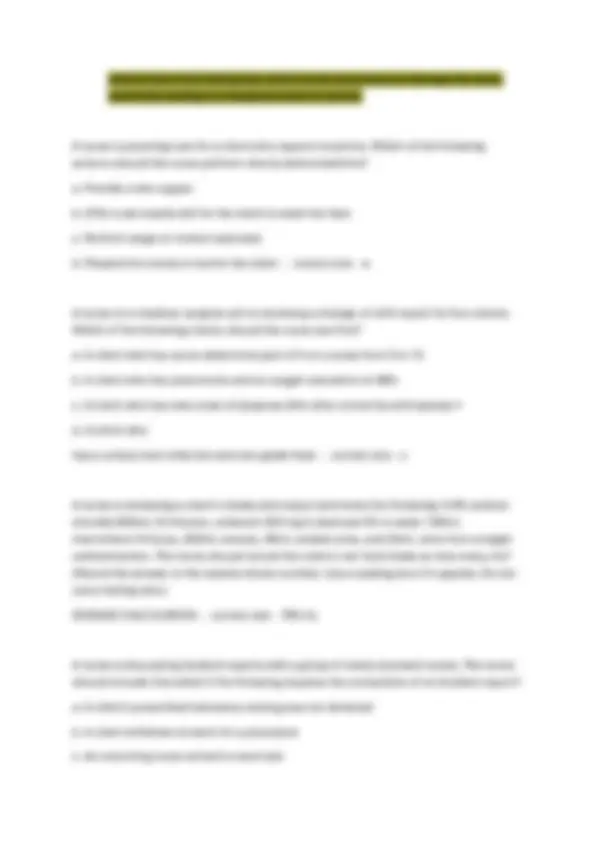
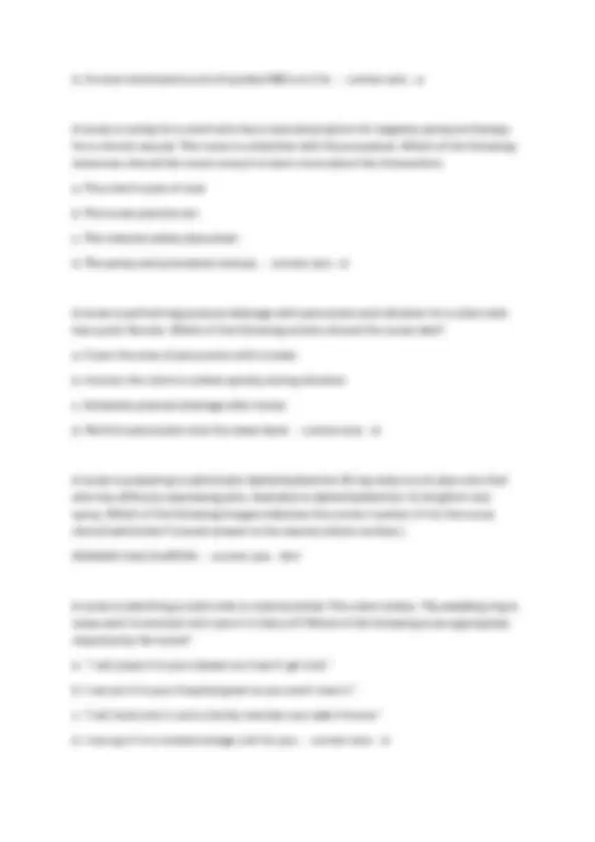
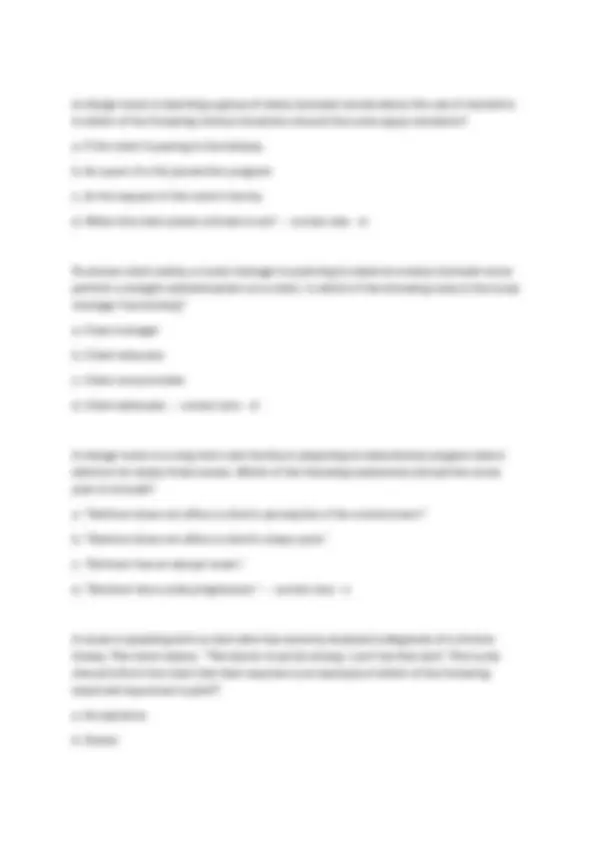
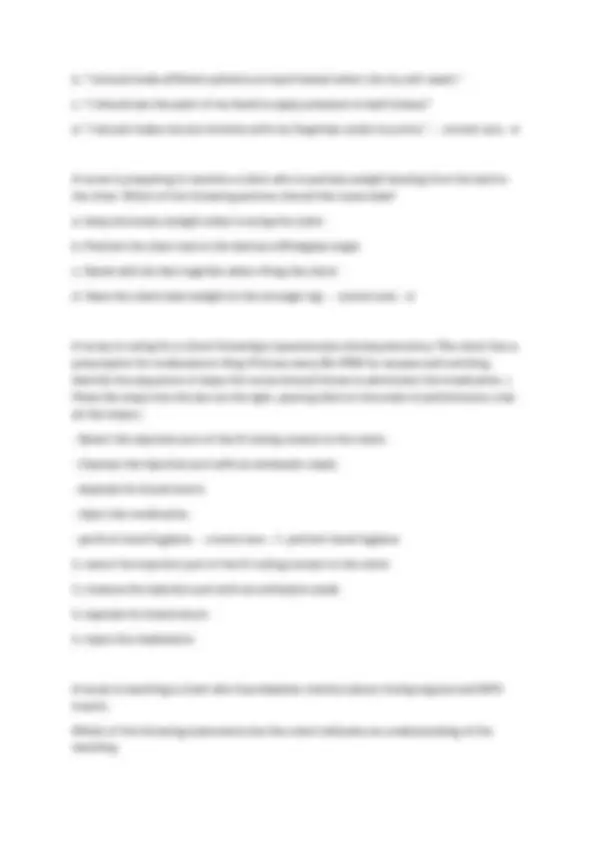
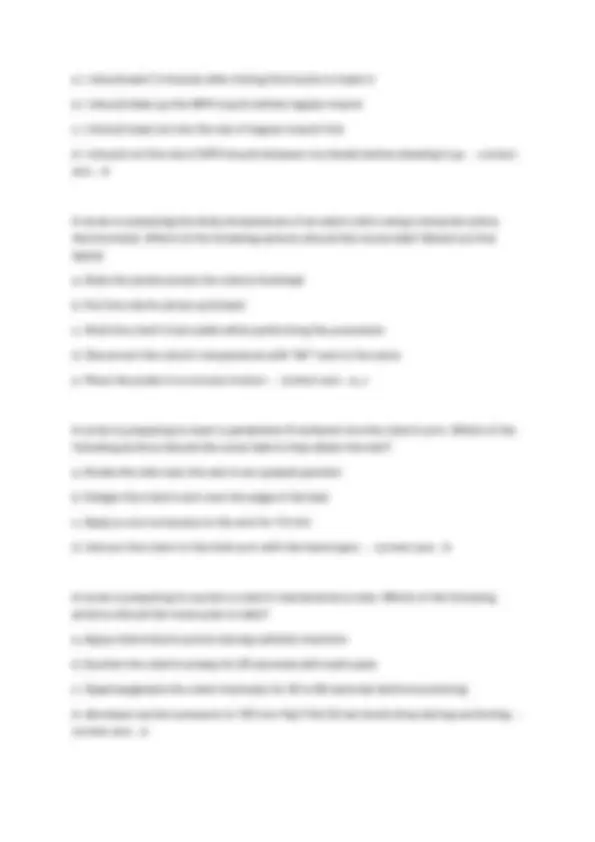
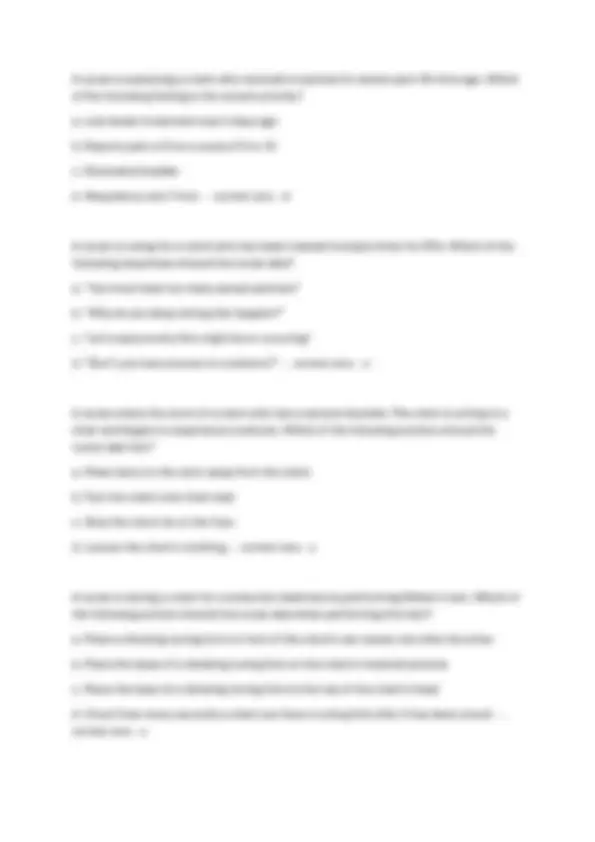
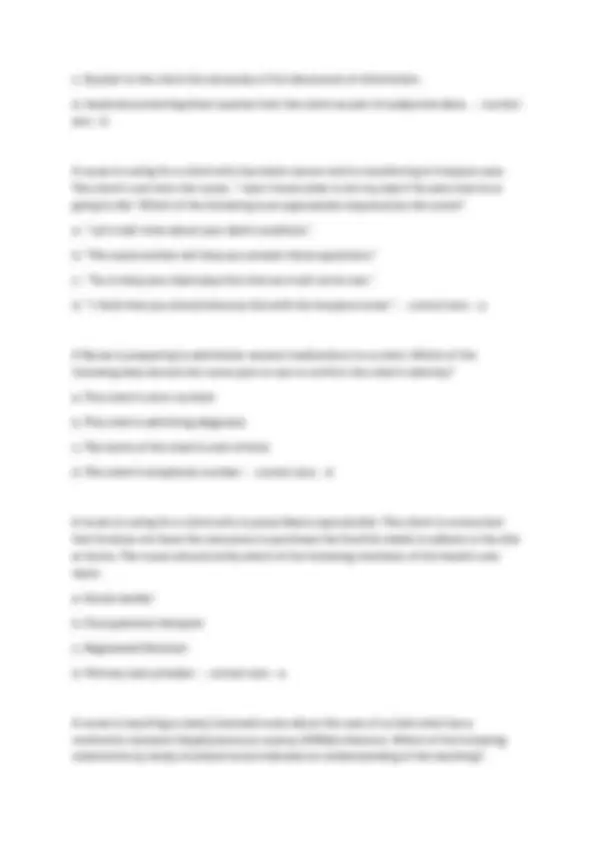
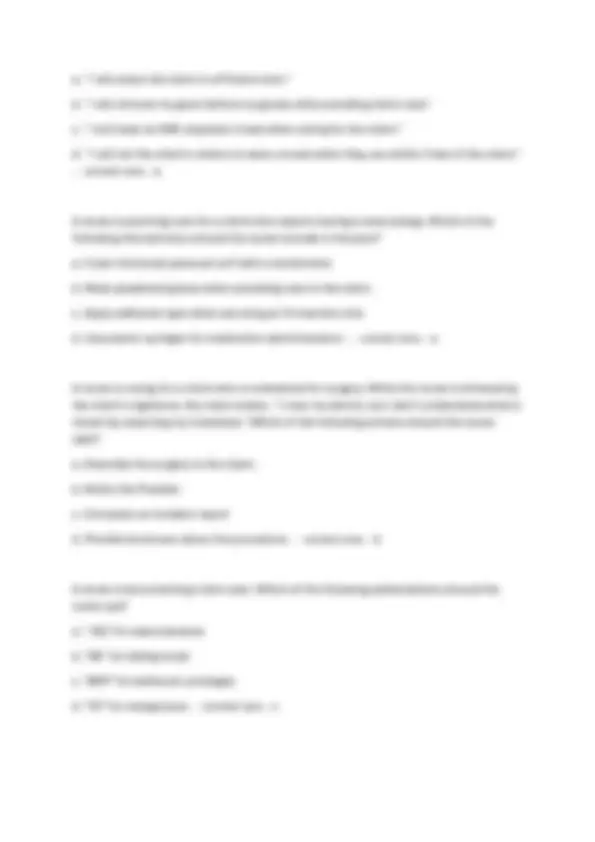
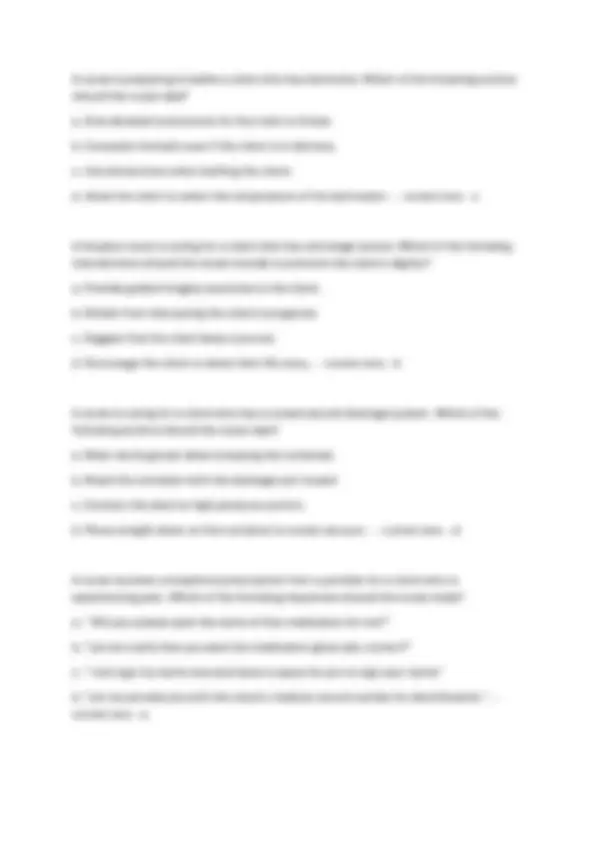
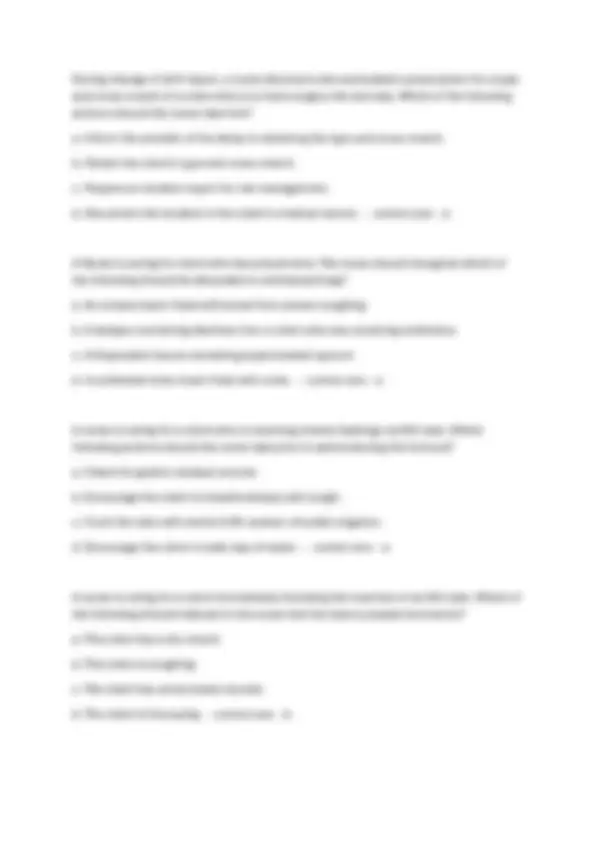
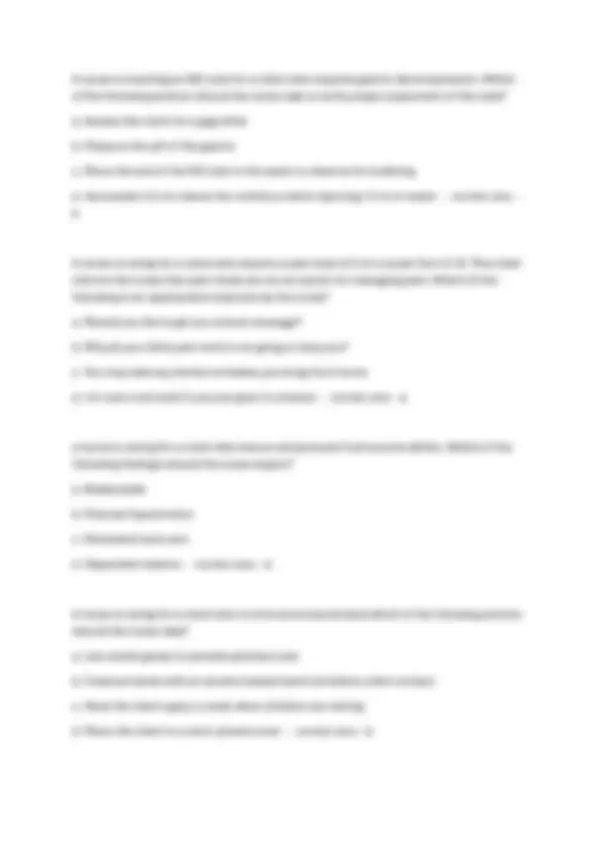
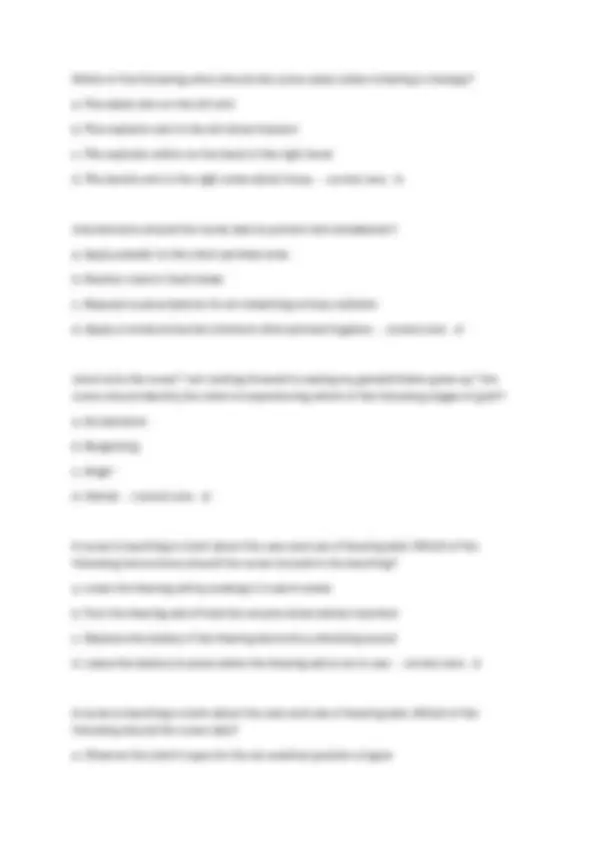
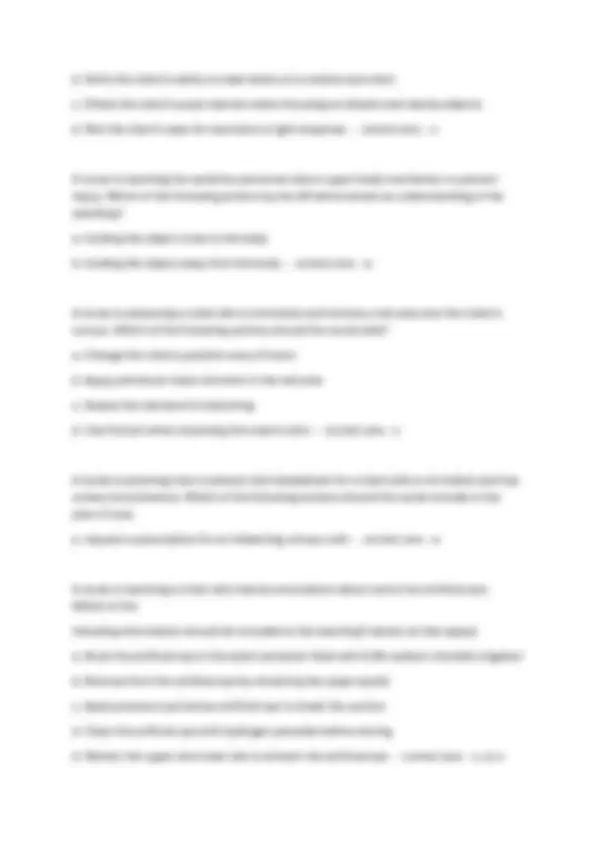
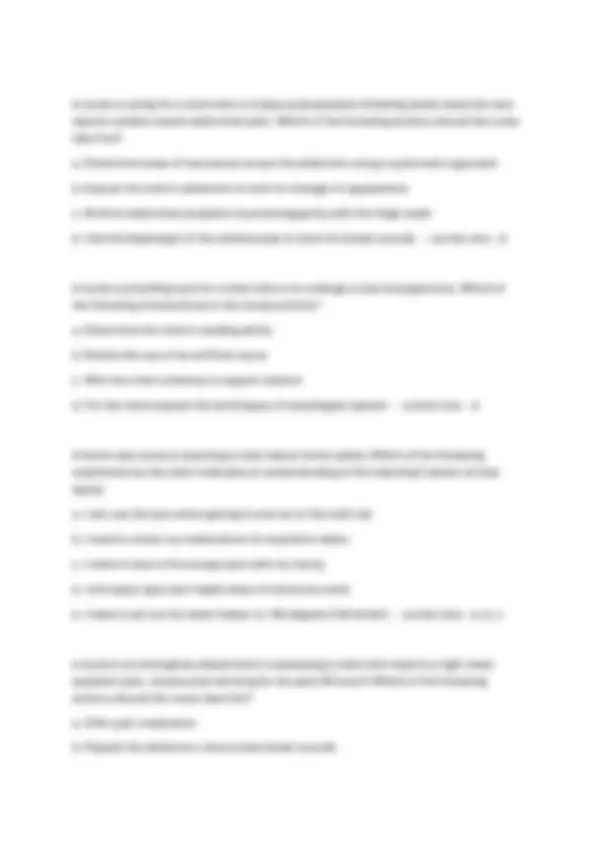
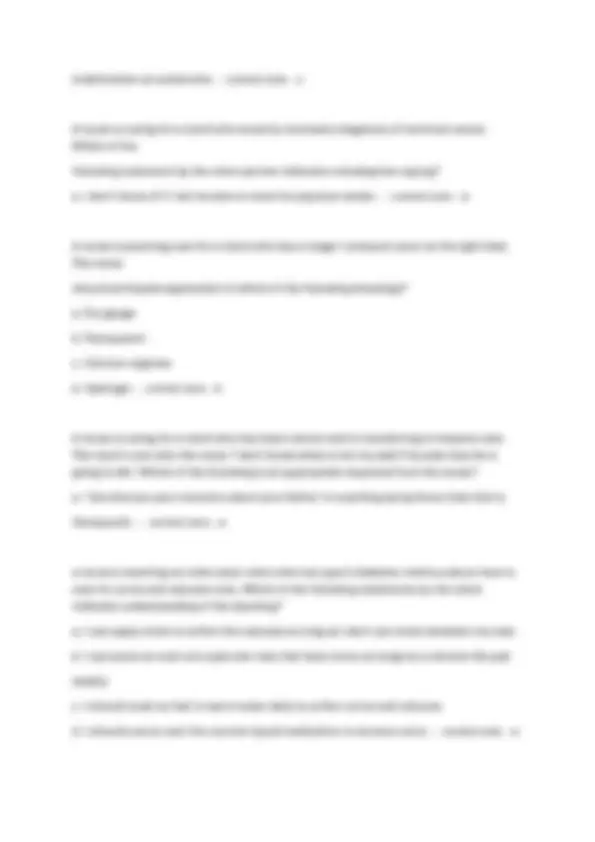
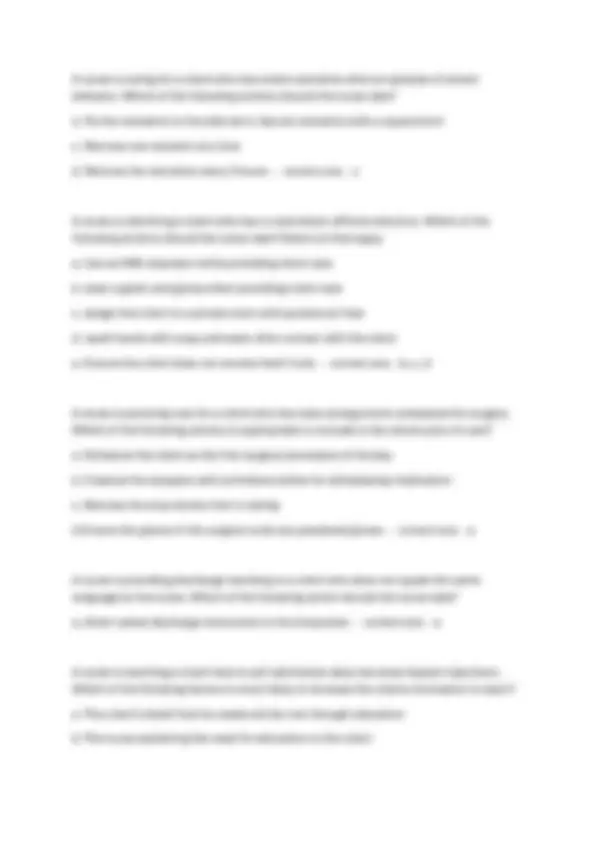
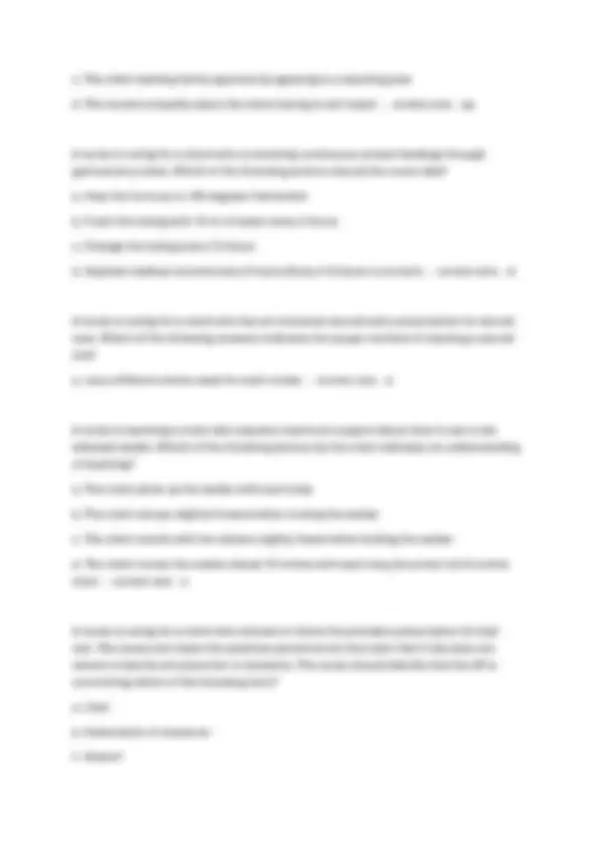
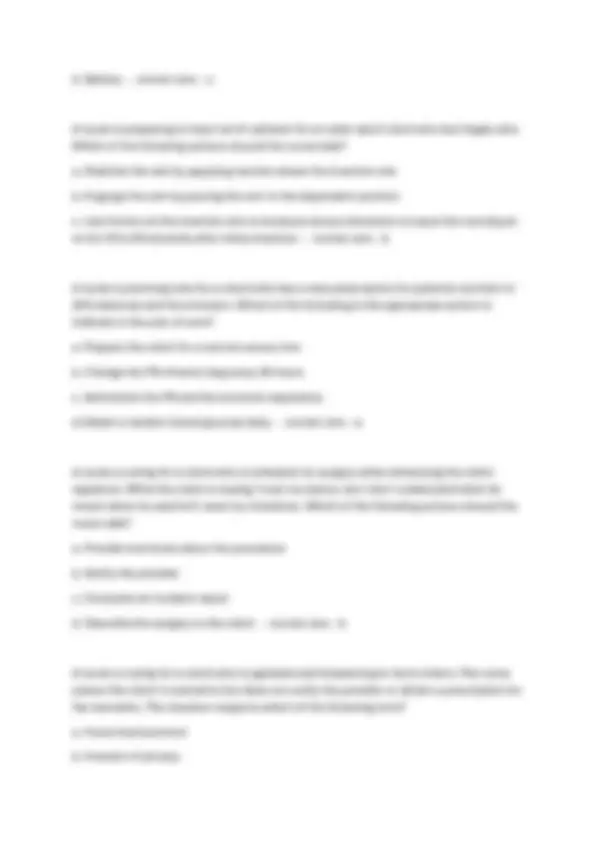
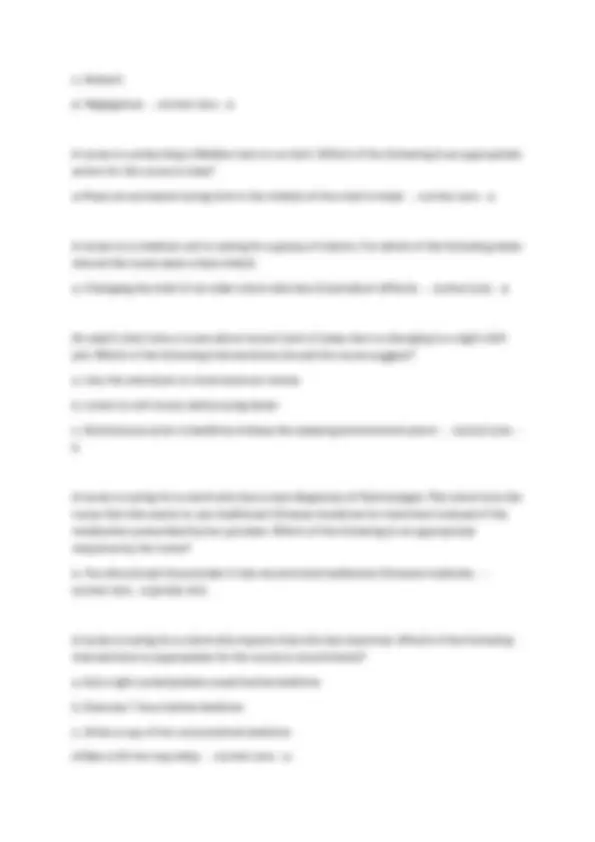
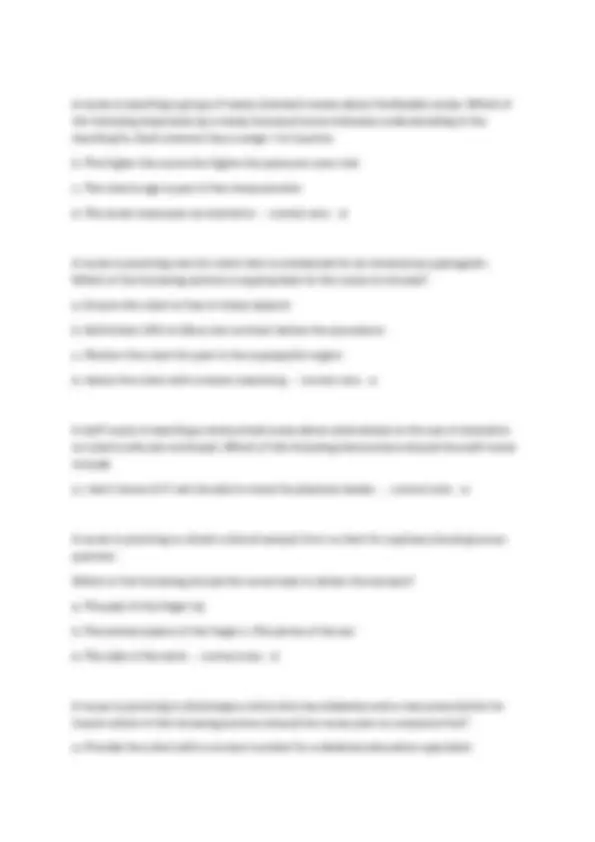
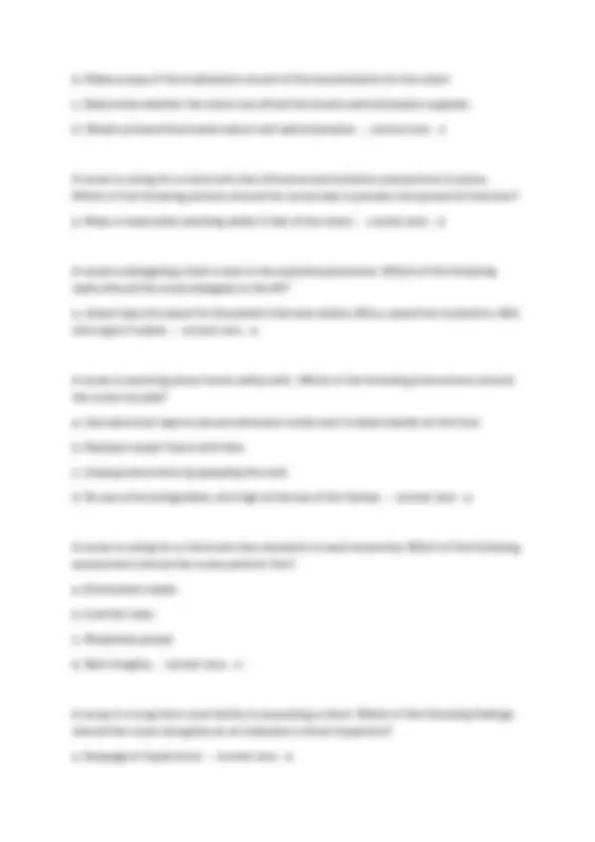
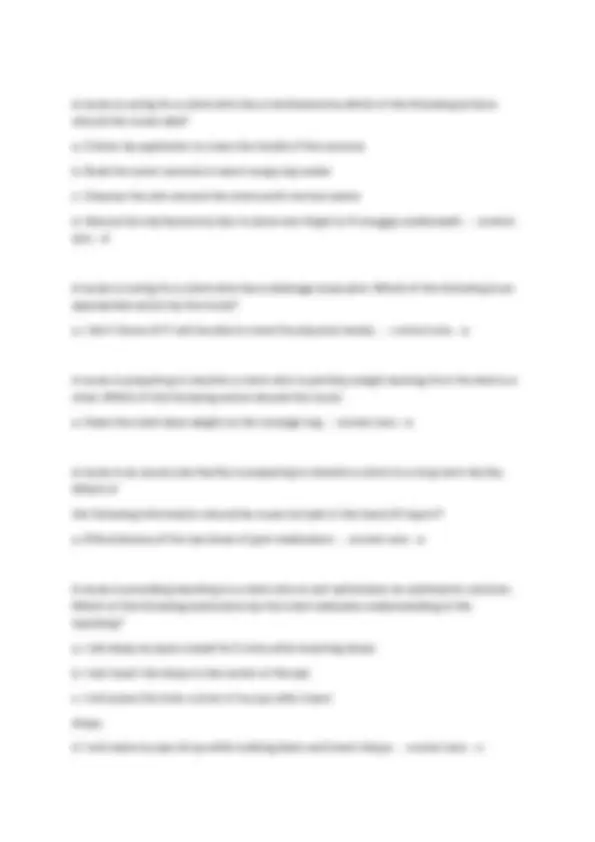
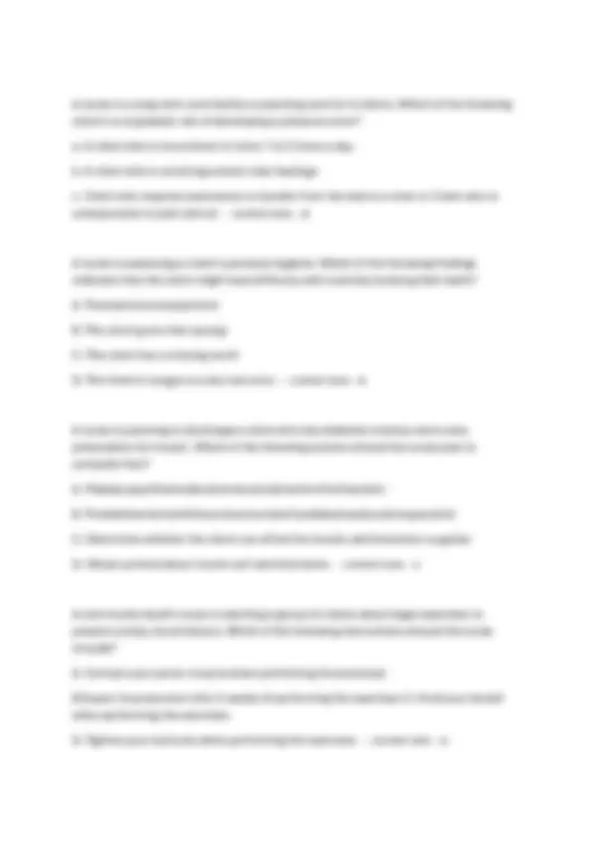
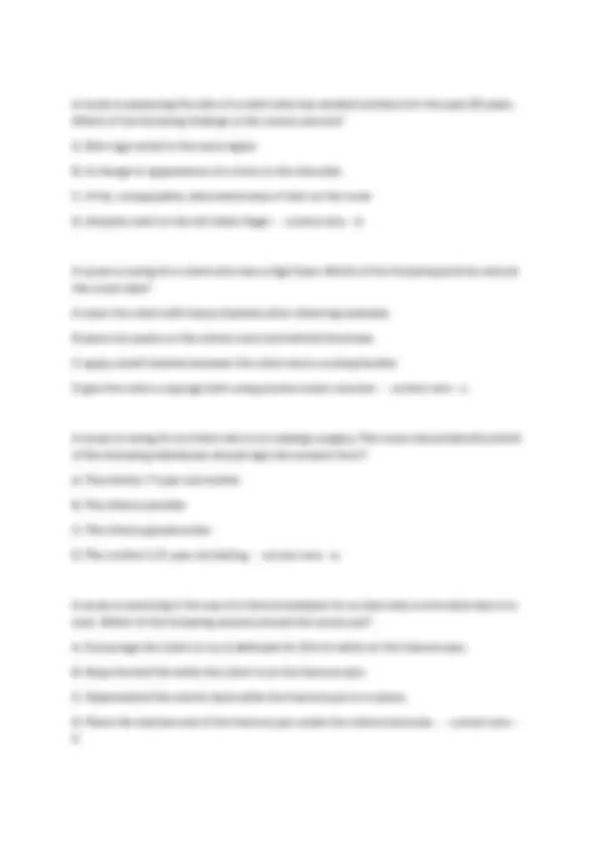
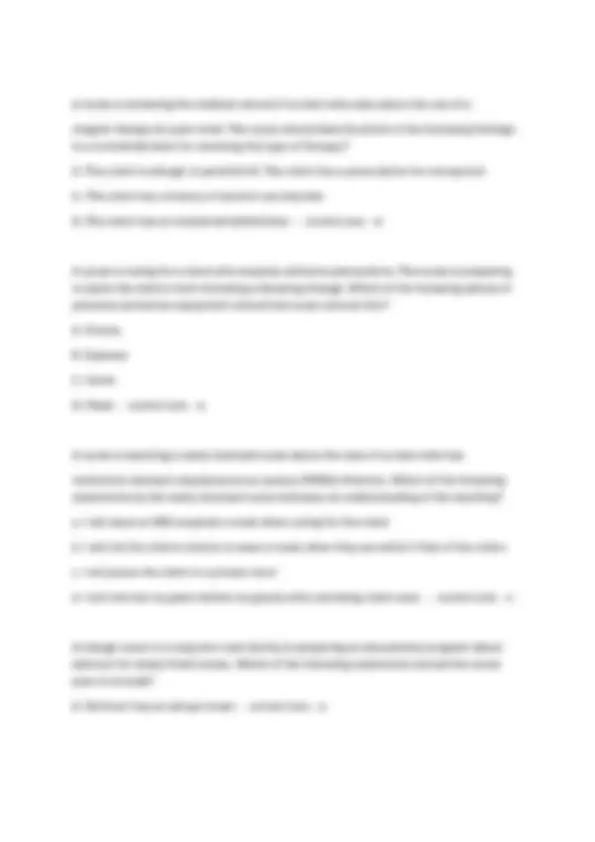
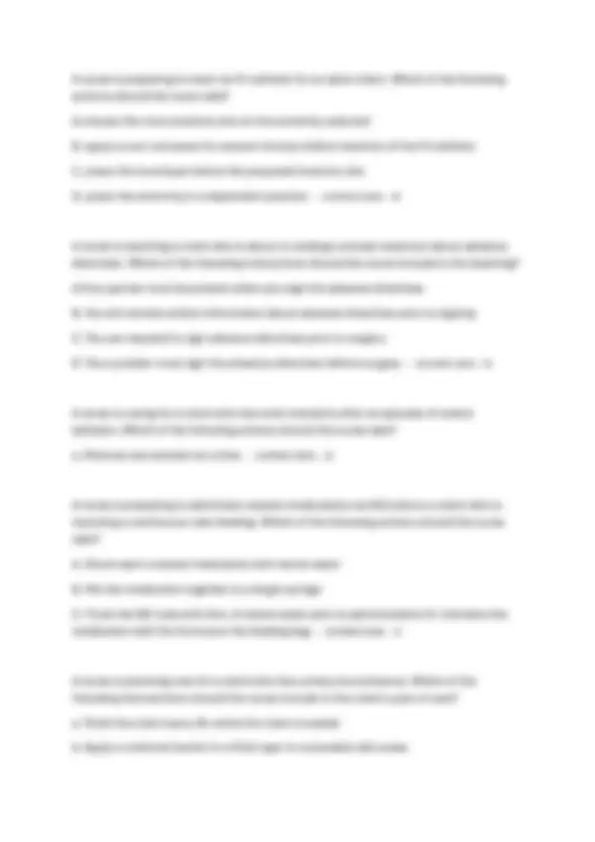
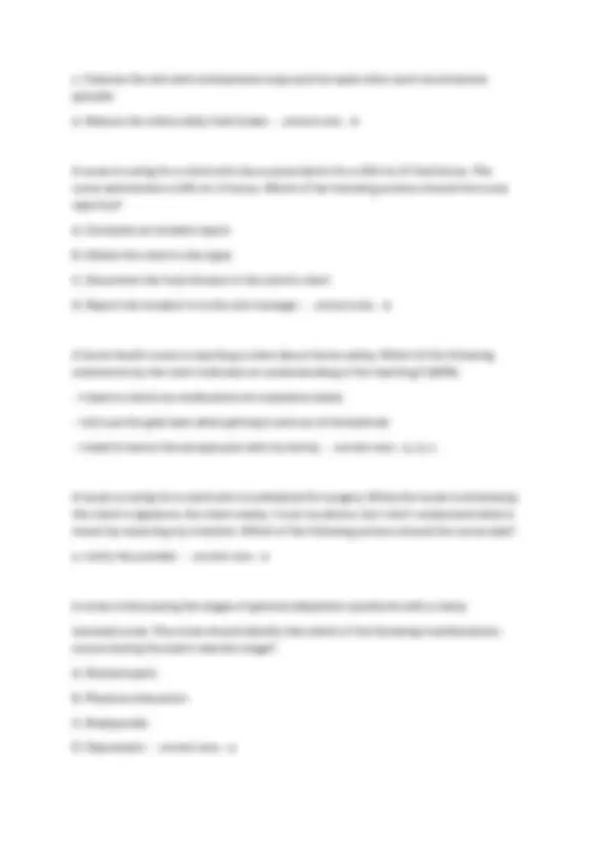
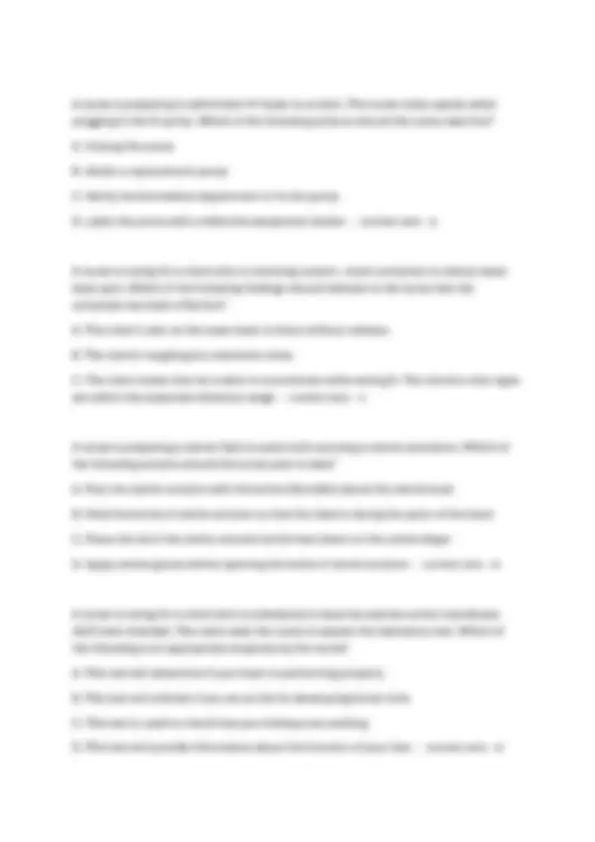
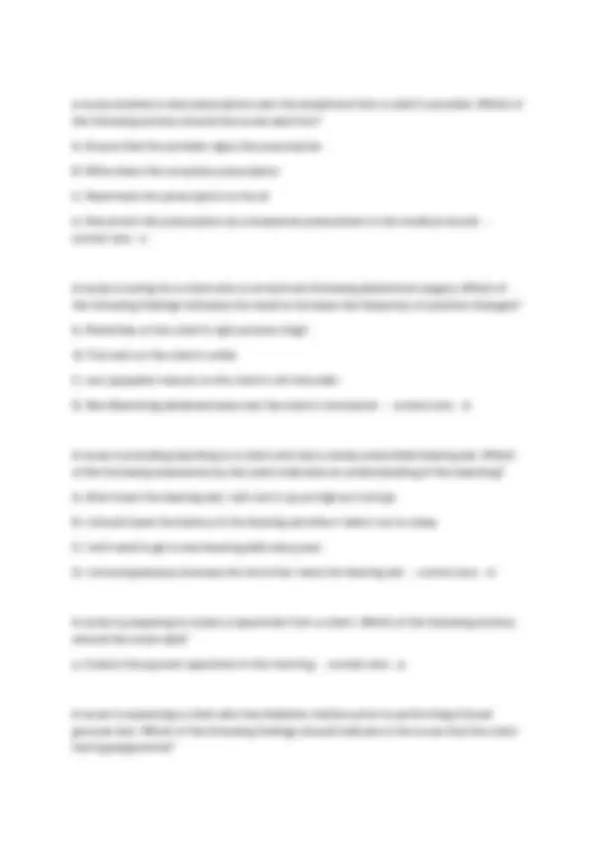
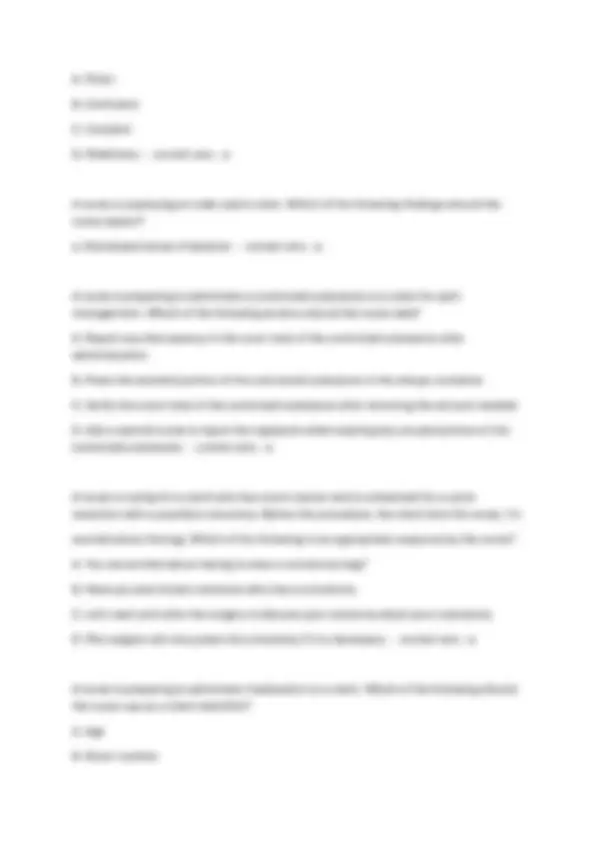
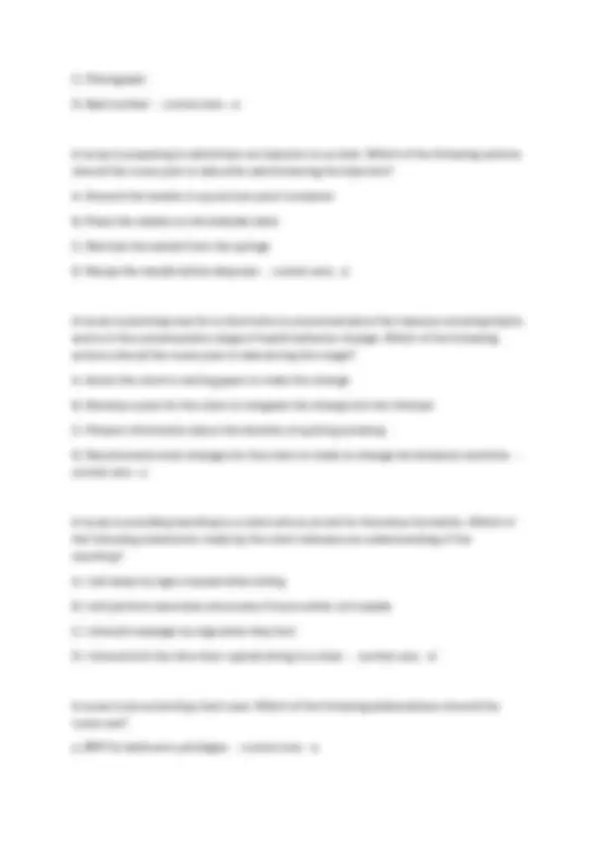
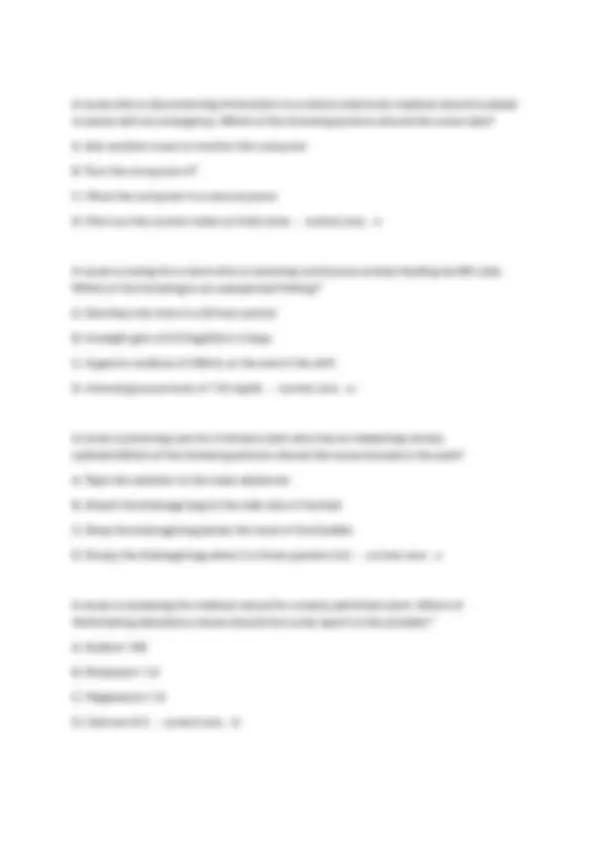
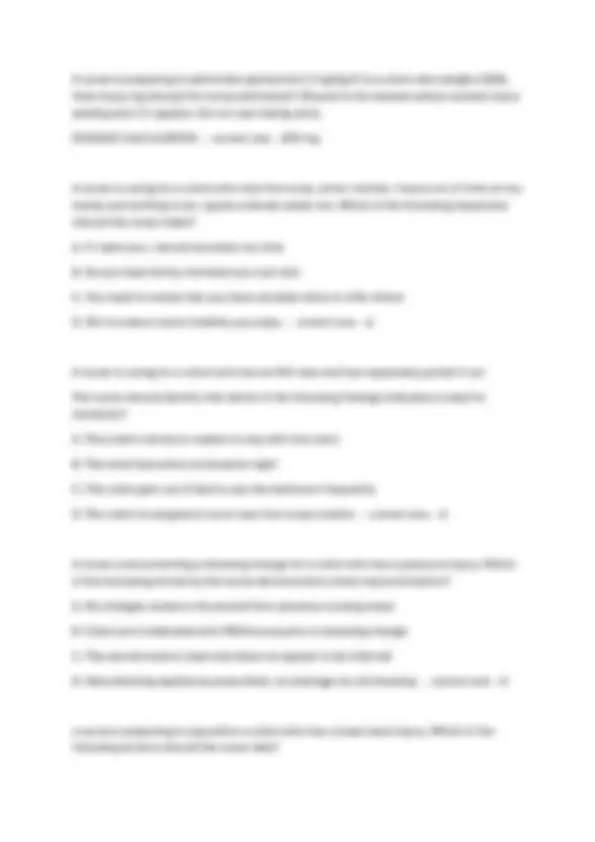
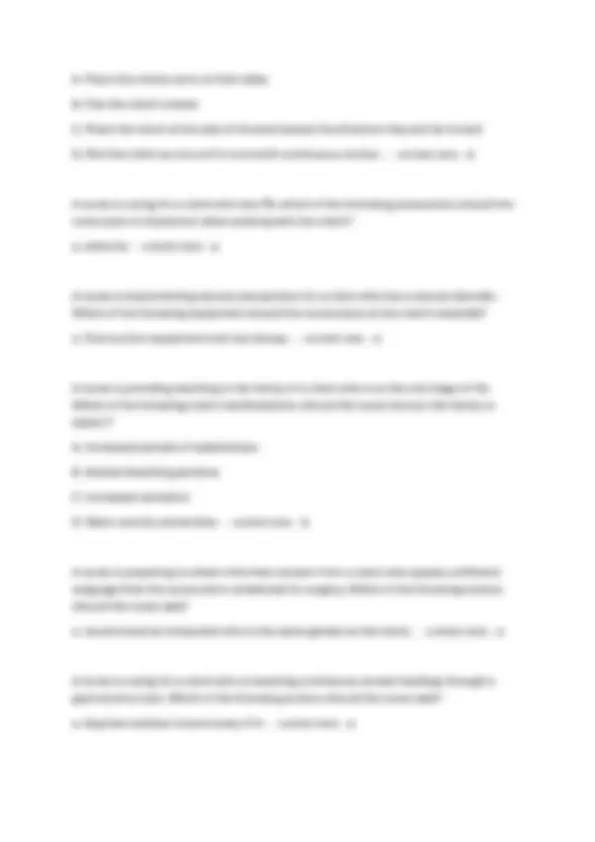
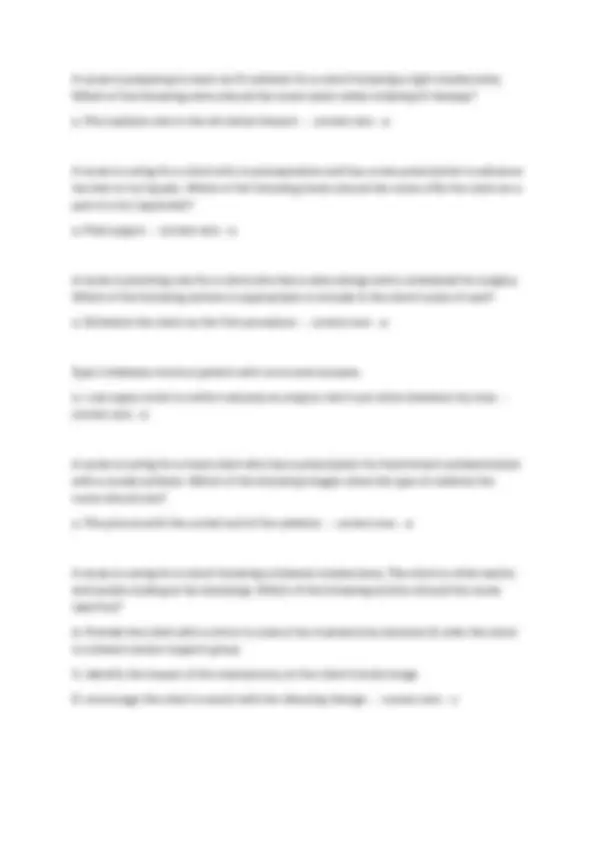
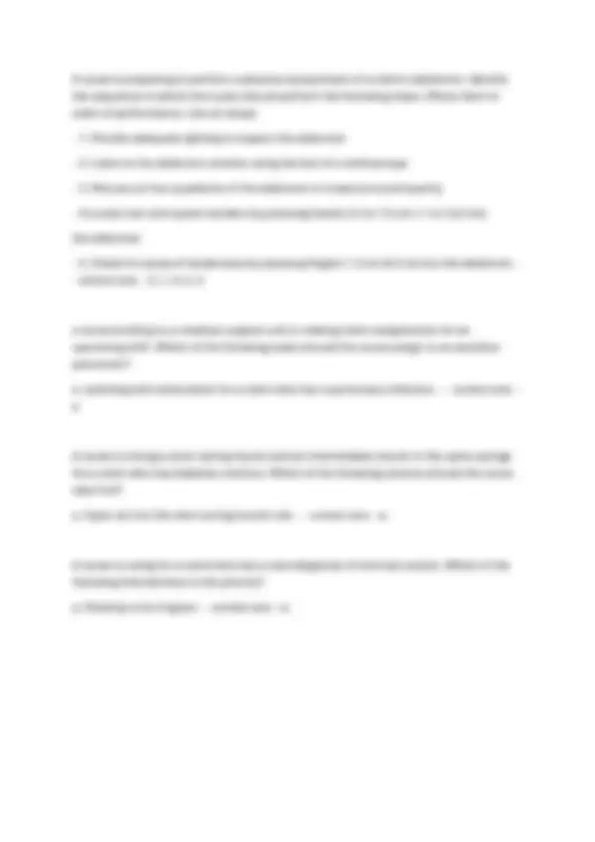


Study with the several resources on Docsity

Earn points by helping other students or get them with a premium plan


Prepare for your exams
Study with the several resources on Docsity

Earn points to download
Earn points by helping other students or get them with a premium plan
Community
Ask the community for help and clear up your study doubts
Discover the best universities in your country according to Docsity users
Free resources
Download our free guides on studying techniques, anxiety management strategies, and thesis advice from Docsity tutors
A.T.I Proctored Exam: Maternal Newborn 2025 – Ultimate Study Guide with 100% Accurate Questions, Expert Answers, and Exam Preparation Strategies
Typology: Exams
1 / 47

This page cannot be seen from the preview
Don't miss anything!








































Here are the multi-choice questions with rationales and indicated correct answers for the provided list.
c. Collect the specimen in the evening. d. Collect 1 mL of sputum. Correct Answer: b. Offer the client oral hygiene after the collection. Rationale:
prevent them from falling over, which could cause injury or damage the valve, potentially leading to a dangerous leak or rupture. A nurse is planning care for a client who reports insomnia. Which of the following actions should the nurse perform shortly before bedtime? a. Provide a late supper. b. Offer a wet washcloth for the client to wash her face c. Perform range-of-motion exercises d. Prepare hot cocoa or tea for the client - - correct ans- - a A nurse on a medical-surgical unit is receiving a change-of-shift report for four clients. Which of the following clients should the nurse see first? a. A client who has acute abdominal pain of 4 on a scale from 0 to 10 b. A client who has pneumonia and an oxygen saturation of 96% c. A client who has new onset of dyspnea 24hr after a total hip arthroplasty • d. A client who has a urinary tract infection and low-grade fever - - correct ans- - c A nurse is reviewing a client's intake and output and notes the following: 0.9% sodium chloride 600mL IV infusion, cefazolin 250 mg in dextrose 5% in water 100mL intermittent IV bolus, 200mL emesis, 40mL voided urine, and 20mL urine from straight catheterization. The nurse should record the client's net fluid intake as how many mL? (Round the answer to the nearest whole number. Use a leading zero if it applies. Do not use a trailing zero.) DOSAGE CALCULATION - - correct ans- - 700 mL A nurse is discussing incident reports with a group of newly licensed nurses. The nurse should include that which if the following requires the completion of an incident report? a. A client's prescribed laboratory testing was not obtained b. A client withdrew consent for a procedure c. An oncoming nurse arrived to work late
A charge nurse is teaching a group of newly licensed nurses about the use of restraints. In which of the following clinical situations should the nurse apply restraints? a. If the client is pacing in the hallway b. As a part of a fall prevention program c. At the request of the client's family d. When the client poses a threat to self - - correct ans- - d To ensure client safety, a nurse manager is planning to observe a newly licensed nurse perform a straight catheterization on a client. In which of the following roles is the nurse manager functioning? a. Case manager b. Client educator c. Client care provider d. Client advocate - - correct ans- - d A charge nurse in a long-term care facility is preparing an educational program about delirium for newly hired nurses. Which of the following statements should the nurse plan to include? a. "Delirium does not affect a client's perception of her environment." b. "Delirium does not affect a client's sleep cycle." c. "Delirium has an abrupt onset." d. "Delirium has a slow progression." - - correct ans- - c A nurse is speaking with a client who has recently received a diagnosis of a chronic illness. The client states, " The doctor must be wrong. I can't be that sick". The nurse should inform the client that their reaction is an example of which of the following expected responses to grief? a. Acceptance b. Denial
c. Anger d. Depression - - correct ans- - b A Nurse on a medical-surgical unit is providing care for four clients. The nurse should identify which of the following situations as an ethical dilemma? a. A surgeon who removed the wrong kidney during a surgical procedure refuses to take responsibility for her actions b. A client who has Crohn's disease reports that his prescription drug plan will not pay for his medications. c. A client who has a new colostomy refuses to take instructions from the ostomy therapist because she "doesn't like him." d. the family of a client who has a terminal illness asks the provider not to tell the client the diagnosis - - correct ans- - d A nurse is planning care for a group of clients. Which of the following tasks should the nurse delegate to an assistive personnel? a. Changing the dressing for a client who has a stage 3 pressure injury b. Determining a client's response to a diuretic c. Comparing radial pulses for a client who is postoperative d.Providing postmortem care to a client - - correct ans- - d A nurse is conducting a health assessment for a client who takes herbal supplements. Which of the following statements by the client indicates an understanding of the use of the supplements? A. I take ginkgo biloba for a headache B. I take echinacea to control my cholesterol C. I use ginger when I get car sick D. I use garlic for my menopausal symptoms - - correct ans- - c A nurse is caring for a client who has influenza and isolation precautions in place. Which of the following actions should the nurse take to prevent the spread of infection? A. Wear a mask when working within 3 feet of the client
b. "I should make different patterns on each breast when I do my self-exam." c. "I should use the palm of my hand to apply pressure to each breast." d. "I should make circular motions with my fingertips under my arms." - - correct ans- - d A nurse is preparing to transfer a client who is partially weight bearing from the bed to the chair. Which of the following actions should the nurse take? a. Keep his knees straight when moving the client b. Position the chair next to the bed as a 90 degree angle c. Stand with his feet together when lifting the client d. Have the client bear weight on her stronger leg - - correct ans- - d A nurse is caring for a client following a laparoscopic cholecystectomy. The client has a prescription for ondansetron 4mg IV bolus every 6hr PRN for nausea and vomiting. Identify the sequence of steps the nurse should follow to administer the medication. ( Move the steps into the box on the right, placing them in the order of performance. Use all the steps.)
a. I should wait 3 minutes after mixing the insulin to inject it b. I should draw up the NPH insulin before regular insulin c. I should inject air into the vial of regular insulin first d. I should roll the vial of NPH insulin between my hands before drawing it up - - correct ans- - d A nurse is assessing the body temperature of an adult client using a temporal artery thermometer. Which of the following actions should the nurse take? (Select all that apply) a. Slide the probe across the clients forehead b. Pull the clients pinna up & back c. Hold the client's hair aside while performing the procedure d. Document the client's temperature with "AX" next to the value e. Move the probe in a circular motion - - correct ans- - a, c A nurse is preparing to insert a peripheral IV catheter into the client's arm. Which of the following actions should the nurse take to help dilate the vein? a. Stroke the skin near the vein in an upward position b. Dangle the client's arm over the edge of the bed c. Apply a cool compress to the vein for 10 min d. Instruct the client to flex their arm with the hand open - - correct ans- - b A nurse is preparing to suction a client's tracheostomy tube. Which of the following actions should the nurse plan to take? a. Apply intermittent suction during catheter insertion b. Suction the client's airway for 20 seconds with each pass c. Hyperoxygenate the client manually for 30 to 60 seconds before suctioning d. decrease suction pressure to 150 mm Hg if the O2 sat levels drop during suctioning - - correct ans- - a
A nurse is obtaining the medication history of a client who asks about taking ginkgo biloba. The nurse should identify which of the following medications can interact adversely with this supplement? a. Warfarin b. Albuterol c. Levothyroxine d. Atorvastatin - - correct ans- - a A nurse is obtaining informed consent from a client who is scheduled for surgery. The client states, "I don't want to go through with the procedure." Which of the following actions should the nurse take? a. Discuss alternative treatments with the client b. Explain to the client the risks involved with not having the procedure c. Express approval of the client's decision to not have the procedure d. Document the client's decision in the medical record - - correct ans- - d A nurse is providing teaching to a client about reducing the adverse effects of immobility. Which of the following statements by the client indicates an understanding of the teaching? a. " I will have my partner help me change position every 4 hours" b. " I will remove my antiembolic stockings while I am in bed" c." I will hold my breath when rising from a sitting position" d." I will perform ankle and knee exercises every hour." - - correct ans- - d A nurse is caring for a client who is postoperative and has a new prescription to advance her diet to full to full liquids. Which of the following foods should the nurse offer the client as a part of a full liquid diet? a. Oatmeal b. Applesauce
c. Scrambled eggs d. Plain Yogurt - - correct ans- - d A nurse is preparing a client who has terminal cancer for discharge. Which of the following questions should the nurse ask when assessing the client's psychosocial history? a. " What medications are you currently taking?" b." Are you experiencing any Pain?" c. " Have any of your relatives been diagnosed with cancer?" d. " What Techniques do you use to cope with stress?" - - correct ans- - d A nurse is performing a skin assessment on an older adult client. Which of the following findings should the nurse expect? a. Thickened outer layer of skin b. Increased skin elasticity c. Reduced sweat production d. Increased Production of oils - - correct ans- - c A nurse is caring for a client who begins to cry after receiving a diagnosis of cancer. Which of the following responses should the nurse make? a. " I would get a second opinion if I were you." b " it might seem bad now, but things will get better." c " it must be difficult for you to receive this kind of news." d I think you would benefit from speaking with our chaplain." - - correct ans- - c A nurse is preparing to obtain a health history from a client. Which of the following actions should the nurse take? a. Use the client's first name when initially meeting the client. b. Tell the client the purpose for collecting the information.
a. " I will place the client in a Private room." b. " I will remove my gown before my gloves after providing client care." c. " I will wear an N95 respirator mask when caring for the client." d. " I will tell the client's visitors to wear a mask when they are within 3 feet of the client."
A nurse is preparing to bathe a client who has dementia. Which of the following actions should the nurse take? a. Give detailed instructions for the client to follow. b. Complete the bath even if the client is in distress. c. Use distractions when bathing the client. d. Allow the client to select the temperature of the bath water. - - correct ans- - c A hospice nurse is caring for a client who has end stage cancer. Which of the following interventions should the nurse include to promote the client's dignity? a. Provide guided imagery exercises to the client. b. Refrain from discussing the client's prognosis c. Suggest that the client keep a journal. d. Encourage the client to share their life story. - - correct ans- - b A nurse is caring for a client who has a closed wound drainage system. Which of the following actions should the nurse take? a. Wear sterile gloves when emptying the container. b. Reset the container with the drainage port closed c. Connect the drain to high pressure suction. d. Press straight down on the container to create vacuum. - - correct ans- - d A nurse receives a telephone prescription from a provider for a client who is experiencing pain. Which of the following responses should the nurse make? a. " Will you please spell the name of that medication for me?" b. "Let me clarify that you want the medication given qid, correct?" c. " I will sign my name now and leave a space for you to sign your name." d. "Let me provide you with the client's medical record number for identification." - - correct ans- - a